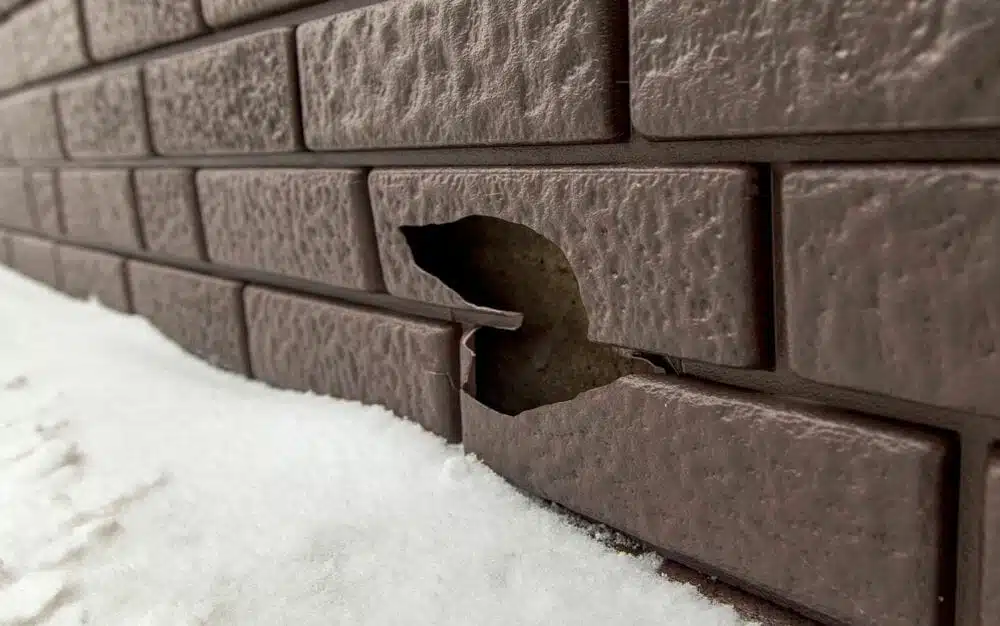Vinyl Siding Repair
When you own a home, you must always be prepared to either spend money on repairs or do them yourself. Of course, there are complicated projects which need professional knowledge. However, some vinyl siding repairs are usually quite easy and not worth spending money on.
For instance, if you have vinyl siding, then once in a while, some pieces will start coming apart. This is a good example of the simple repairs that you can do yourself. In most cases, when this happens, you can push back the place until it clicks back in place. But this isn’t a permanent solution, and the fact that the piece is coming apart means there is a problem somewhere.

For such a case, you need to repair it and to do that you will need extra vinyl siding pieces similar to the ones used. You can find these in your local siding supplier stores or check if any was left during the installation. Whichever way, ensure the piece is precisely the same as the installed one or has a close match. If you are looking for Ideal Siding give us a call today!
Decide on where to place the new piece
After the vinyl siding has been on your exteriors for a while, it starts fading, and because of that, it will have a lighter shade than the new piece to be installed. However, this should not be a problem because you can always repair by removing a good piece of vinyl siding from a less visible part of the house and use it to replace the damaged, yet visible part, then use the new piece in the less visible place. This will help make the contrast between the two shades less visible.
Are many pieces coming off, or just one?
Sometimes the damaged piece of vinyl siding could be just one, while at other times more than one piece could be coming off. If that is the case, you will need to check the nails because the problem could be that the nails were installed tightly, hence preventing expansion which explains the damage.
You will need to remove these vinyl siding pieces and put them back with slightly loosely installed nails. Also, before starting the actual repair work, examine the size of the damage so that you can know how big or small the replacement piece should be.
The best part about this repair task is that it does not require technical skills, and it takes a little amount of time.
Patching a small area
- Using a utility knife, you can repair this by cutting around the area to be replaced, leaving approximately 2 inches along the edge of the damaged area. Then remove the cut out using a zipper.
- Cut a patch from the new siding piece using a square and a utility knife, then slice off the upper patch of the patch.
- Test if the patch is fitting. If it fits, then after snapping it in place at the bottom, the patch should easily slip under the piece above. Cut away the side portions.
- After having a good fit, now you can apply enough butyl caulk around the area you had cut out then push the patch into place. It will not stick automatically. Therefore you need to use duct tape to hold it in place. After a day, you can remove the tape, and the caulk should be dry and in place by now.
Replacing a panel section
- Using a zipper, pry out the panel directly above the one you need to replace and slip shims along the pried out the joint.
- Carefully cut through the panel on both sides, making sure not to damage the building paper used on the building. Then keenly use a flat pry bar to get rid of the nails and remove the cutout.
- Cut a patch from the new piece, and try making it 4 inches longer than the cutout.
- Use a generous amount of caulk on the sides of the cutout, leaving a space of about 1 ½ inches from the cutout area on all sides.
- Place the replacement patch carefully over the cutout and press it into the caulk, then slide it up. Snap the patch in place by pressing on the bottom.
- Get rid of the shims used before, and snap the replacement panel into place, ensuring the seal is perfect on all the sides.
If you are living in Vancouver, call us for getting siding services in Vancouver.